10 software solutions for government
- Jotform Government: best for governmental organizations that rely on forms for data collection and management
- Accela: best for states, counties, and large cities with a number of departments that need to coordinate with each other and share information
- AccessE11: best for municipalities that want to manage resident services, requests, and communication digitally
- AccuFund: best for government agencies looking for an accounting solution
- ClearPoint Strategy: best for managing department strategy, goals, key performance indicators, and reporting needs
- GovOS: best for state and local governments looking for an all-in-one solution to help manage essential processes and assist their constituents in a secure digital environment
- OpenGov: best for infrastructure asset management and work orders
- POSSE by Computronix: best for managing permits, licenses, and regulatory compliance
- Salesforce Public Sector: best for building web portals for citizens to interact with and digitizing government operations
- Workday: best for managing payroll and HR operations
Public sector organizations that are pursuing digital transformation need to ensure the software solutions they choose are truly effective.
Government software solutions need to be functional, enabling a department or government organization to perform their essential duties efficiently. They need to be usable, ensuring public sector employees can adapt to new digital tools easily. And they need to meet the needs of ordinary citizens who may be interacting with the platform (for example, filing reports or complaints).
In this article, we’ll first review a few specific types of software that public entities might need. Then we’ll share 10 of the top software solutions for public sector users.
Types of government software solutions
For robust government workflow automation and process optimization, it’s important to start with the right software solutions. These solutions fall broadly into a few major categories.
Procurement and purchasing
Government purchasing decisions are much more complicated than private sector purchasing decisions because public funds are being used. Most government purchases are subject to a specific set of ordinances or regulations that govern how public funds are spent.
The government employees choosing software must meet those additional regulatory requirements, including using open competition and unbiased evaluation based on specified criteria.
Accounting and finance
Accounting software may also require additional features that wouldn’t be required in the private sector. Specific accounting principles help track the public’s money and how it’s spent, and much of that data is open to the press and the public under Freedom of Information Act policies.
Enterprise resource planning (ERP)
ERP systems help administrative employees keep track of data and processes across all departments to give the essential big-picture perspective that empowers smoother operations and better allocation of resources.
ERP platforms for government users must be structured for maximum flexibility, but they also have to integrate well with existing platforms and networked devices.
Best government software platforms
Now that we’ve covered some key types of government software, let’s explore 10 of the top solutions available for public sector organizations in 2024. These platforms offer a range of features to help streamline operations, improve efficiency, and better serve constituents.
1. Jotform Government
Jotform Government, a subset of Jotform Enterprise, helps public organizations and agencies manage data collection.
With Jotform Government, teams have access to the full suite of Jotform products, including powerful form building and management, automatically generated databases with Jotform Tables, e-signature collection with Jotform Sign, PDF-to-form-conversion with Jotform Smart PDF Forms, automated report generation with Jotform Report Builder, custom app creation with Jotform Apps, approval workflows with Jotform Approvals, and more.
A centralized dashboard allows users to oversee operations from a single location.
Security is prioritized with HIPAA-, GDPR-, and CCPA-friendly compliance features. Data is stored in local data centers hosted by the FedRAMP-compliant projects of Google Cloud Platform. Jotform is a StateRAMP Progressing Product and has TX-RAMP authorization.
- Best for: governmental organizations that rely on forms for data collection and management
- Key features: drag-and-drop form building, 10,000-plus form templates, PDF editing, PDF-to-form conversion, automated workflows, database management for form submissions, e-signature collection, centralized dashboard
- Pros: ability to use the full suite of highly functional Jotform products with access management for multiple users
- Cons: organizations that are less form-reliant may have less of a use case
- Pricing: contact sales for pricing
- Platforms: browser, iOS, Android
- Overall Gartner user rating for Jotform Enterprise: 4.7/5.0
2. Accela
Adopted by states, counties, and cities all over the United States, the Accela Civic Platform is a collection of highly secure cloud-based solutions designed to help government workers fulfill a number of citizen-facing and internal workflows. From licensing and permitting to police report management and complaint processing, Accela can help governments of any size get work done more efficiently.
- Best for: states, counties, and large cities with a number of departments that need to coordinate with each other and share information
- Key features: workflow automation and task assignments, geographic data visualization, document review support, citizen portals, mobile support, Rapid Damage Assessment package to facilitate data collection and response planning
- Pros: highly functional with a broad range of features, comprehensive platform
- Cons: outdated in some ways with a steep learning curve and training needed according to some users
- Pricing: contact sales for pricing
- Platforms: browser, Mac, Windows, iOS, Android
- Overall G2 user rating: 3.9/5.0
3. AccessE11
AccessE11 is a citizen issue management platform designed to help small and medium-sized government organizations manage interactions with residents. It’s essentially a digital alternative to the 311 resident services phone number used by many cities.
AccessE11 offers CRM functionality to manage resident relationships, a geographic information system to view issues maps, service request automation, and email and SMS support.
- Best for: municipalities that want to manage resident services, requests, and communication digitally
- Key features: automated contact management through multiple channels; automated and streamlined workflows; multichannel resident request communication; multichannel service requests through web forms, texts, and private or public portals
- Pros: user reviews praise the ease of use and customer support
- Cons: tool is specifically focused on resident communications and requests, so less comprehensive than other platforms
- Pricing: contact sales for pricing
- Platforms: browser, iOS, Android
- Overall Capterra user rating: 4.8/5.0
- Overall G2 user rating: 4.8/5.0
4. AccuFund
As daunting as managing a small business’s finances can be, financial management can be even more fraught when the funds you’re accounting for belong to the public.
AccuFund offers a financial management system for government, with solutions for a number of accounting responsibilities, including billing, grants, taxes, licenses, and much more. Reporting and dashboards are available, so government agencies can manage their funds transparently.
Government agencies can manage their accounting tasks with AccuFund Anywhere Online, a cloud-based solution, or they can host data on their own servers with an onsite solution.
- Best for: government agencies looking for an accounting solution
- Key features: robust core accounting platform that helps public entities manage the public coffers more efficiently; multiple modules programmed to handle specialized tasks, such as grants management, payroll, utility billing, and more
- Pros: onsite and cloud-based options
- Cons: reporting features and timesheets are complicated and difficult according to some users
- Pricing: contact sales for pricing
- Platforms: browser
- Overall Capterra user rating: 4.3/5.0
- Overall G2 user rating: 3.8/5.0
5. ClearPoint Strategy
Local governments can use ClearPoint Strategy to build public-facing dashboards that provide residents with updates about initiatives and projects. Government employees can use the platform to create strategy frameworks and generate customized reports on important metrics. Different reporting capabilities can help government agencies meet different kinds of reporting requirements.
Departments and agencies use ClearPoint Strategy to help manage performance indicators and strategic goals by integrating planning, management, and customized reporting for improved data visualization.
- Best for: managing department strategy, goals, key performance indicators, and reporting needs
- Key features: public dashboard creation, reporting options, data aggregation, reporting templates, AI-powered analytics
- Pros: high degree of customizability for layouts, forms, and reports; software integrations
- Cons: steep learning curve and setup time according to some users
- Pricing: contact sales for pricing
- Platforms: browser
- Overall Capterra user rating: 4.9/5.0
- Overall G2 user rating: 4.7/5.0
6. GovOS
GovOS is a transaction and compliance software designed to help local governments manage various processes. Its cloud-based software solutions allow government employees to automate workflows, speed up routine operations, and help provide frictionless access to the critical public services your community needs, including infrastructure, licensing, and regulatory services.
Its products include a cloud platform for storing and managing government records, a tax filing and collection management system, and a business licensing program.
- Best for: state and local governments looking for an all-in-one solution to help manage essential processes and assist their constituents in a secure digital environment
- Key features: public records storage; business licensing; rental compliance management; property record submissions; tax collection; Application Designer program for digitizing processes, including document building, e-signatures, and online forms
- Pros: support for a variety of government processes, including management solutions for public records, revenue and taxes, licenses, rentals, and more
- Cons: expensive and time-consuming to implement and train staff on according to some users
- Pricing: contact sales for pricing
- Platforms: browser
- Overall Capterra user rating: 4.6/5.0
- Overall G2 user rating: 3.9/5.0
7. OpenGov
OpenGov is a cloud-based software platform that offers government organizations solutions for asset management, permitting and licensing, budgeting and planning, procurements and contracts, data reporting, and more.
Government officials can use the platform to manage infrastructure — monitor asset conditions, track work history, optimize resource allocation, and assign maintenance tasks, among many other functions. A Scenario Builder lets you design budgeting plans and prioritize projects.
- Best for: infrastructure asset management and work orders
- Key features: budgeting and planning features, including automation and workflow tools for transparent communication with the public; public hearings and multichannel engagement; resident services; enterprise resource planning
- Pros: support for a variety of visual formatting types for data-backed reports, customizable dashboards
- Cons: some reports of technical bugs where accounts and updates don’t load correctly, reports from a few users regarding some confusing budgetary screens and views
- Pricing: contact sales for pricing
- Platforms: browser, iOS, Android
- Overall Capterra user rating
- Overall G2 user rating
8. POSSE by Computronix
Computronix’s POSSE (“public one-stop service engine”) is a suite of solutions that includes robust features to help streamline and automate workflows for code enforcement, building, planning, permitting, and other essential public functions.
POSSE is focused on helping governments manage permitting and licensing. Its solutions can handle everything from issuing angling licenses to tracking consumer protection cases and regulatory permitting.
- Best for: managing permits, licenses, and regulatory compliance
- Key features: ABC (Alcoholic Beverage Control) tool for managing liquor licensing and compliance; Gaming Control Software helps agencies establish, enforce, and administer regulations for casinos and games of chance; reporting features
- Pros: reporting, workflow automation, premade workflows, mobile support for customer self-service and field inspections, unlimited license and inspection types
- Cons: mobile support is specific to inspections and field workers
- Pricing: contact sales for pricing
- Platforms: browser, iOS and Android apps for field inspections
- Overall Capterra user rating: 4.8/5.0
9. Salesforce Public Sector
Salesforce is a major private sector CRM, but it also offers a number of solutions for public sector organizations and governmental agencies.
Government employees can use Salesforce Public Sector tools to create public-facing interfaces, which citizens can use to submit forms and answer questions. Salesforce Public Sector solutions also let government organizations automate workflows, embed support chatbots on websites, digitize forms and facilitate form filling, and analyze large datasets.
There are countless government use cases, including licensing, employee relations, inspection and permitting, grants management, and emergency response.
- Best for: building web portals for citizens to interact with and digitizing government operations
- Key features: no-code and low-code tools to help user agencies tailor their deployment to best fill their needs; out-of-the-box solutions for benefits management and other areas to help residents get the information and results they need, including guided digital process creation; premade public-facing government portal templates
- Pros: constituent messaging support, including email, SMS, and WhatsApp; call transcription; guided applications for citizens; file digitization; case analysis and classification
- Cons: interface can be overwhelming according to some users
- Pricing: contact sales for pricing
- Platforms: browser
- Overall G2 user rating for Government Cloud product: 4.3/5.0
10. Workday
Workday is an HR and workforce management tool that offers solutions for the public sector as well as the private sector. Agencies at all levels of government, including federal, use Workday to run workforce processes. Workday Government Cloud is mobile friendly. It helps agencies recruit and hire employees, track diversity metrics, analyze employee retention, and more.
Workflow automations and financial reporting can help government organizations streamline processes, save time, and handle audits.
- Best for: managing payroll and HR operations
- Key features: access to real-time financial data and analytics to help improve decision-making and fiscal control, compliance and auditing controls for better transparency and integrity
- Pros: mobile friendly, recruiting and onboarding support, employee training management, fund accounting, budgeting, procurement process management
- Cons: reports from some users regarding difficulties connecting with customer support in a timely and useful manner; potentially laborious, time-consuming process for configuration and deployment
- Pricing: contact sales for pricing
- Platforms: browser, iOS, Android
- Overall Capterra user rating: 4.4/5.0
- Overall G2 user rating: 4.1/5.0
Photo by RDNE Stock project



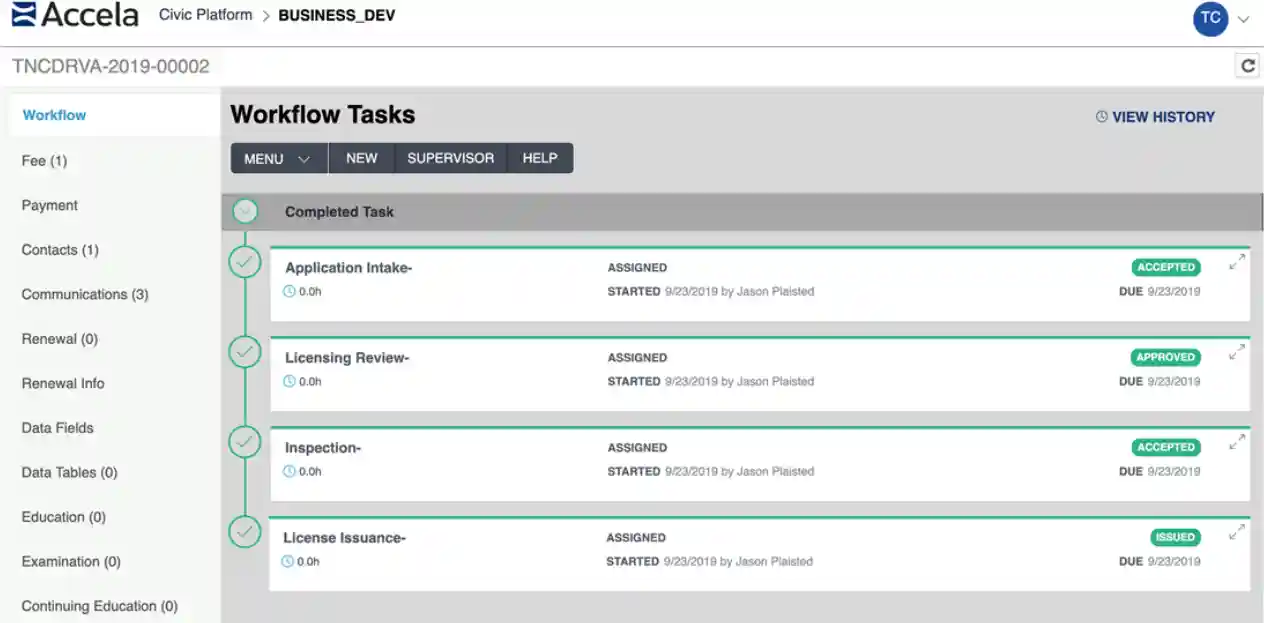
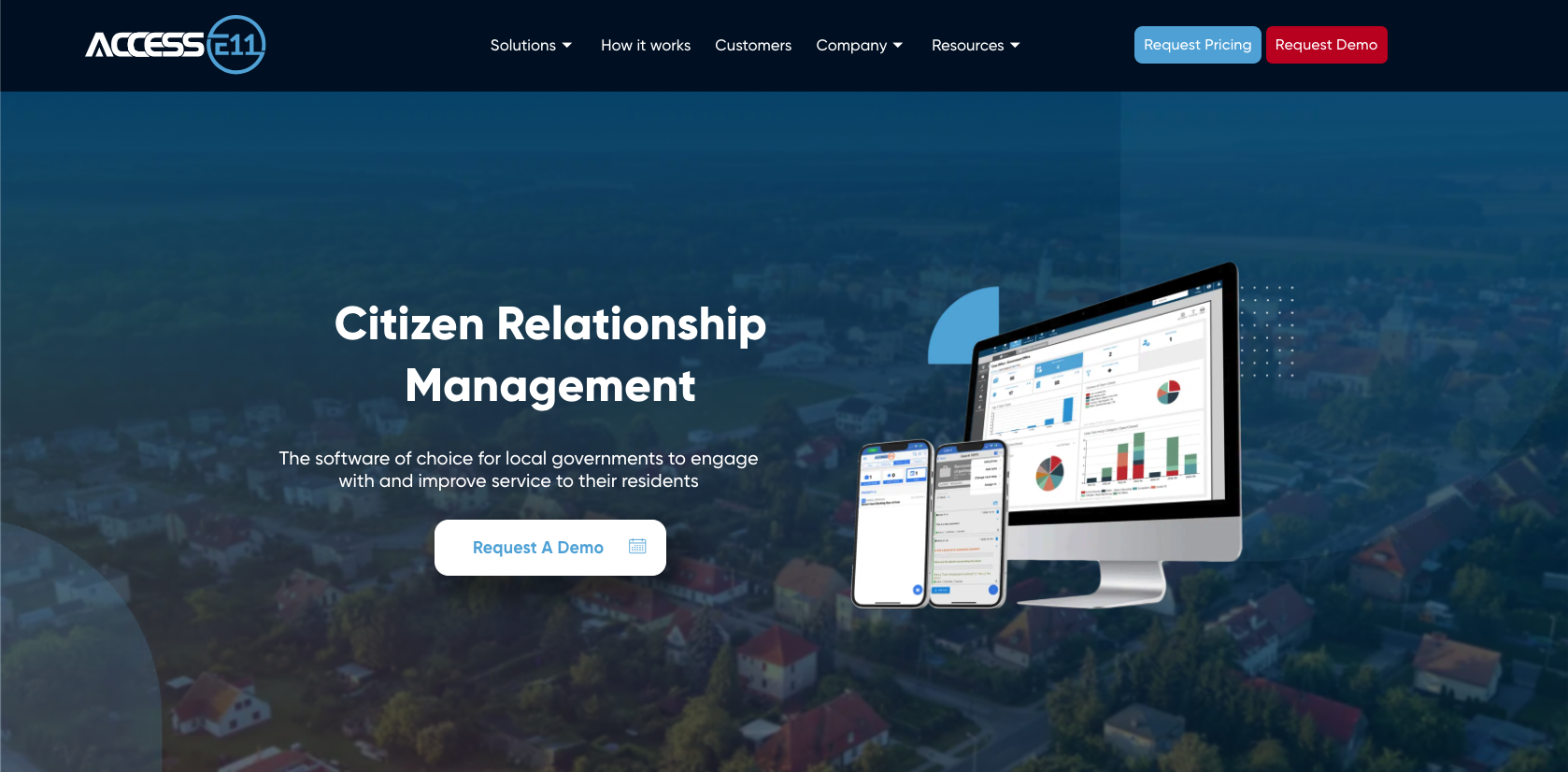
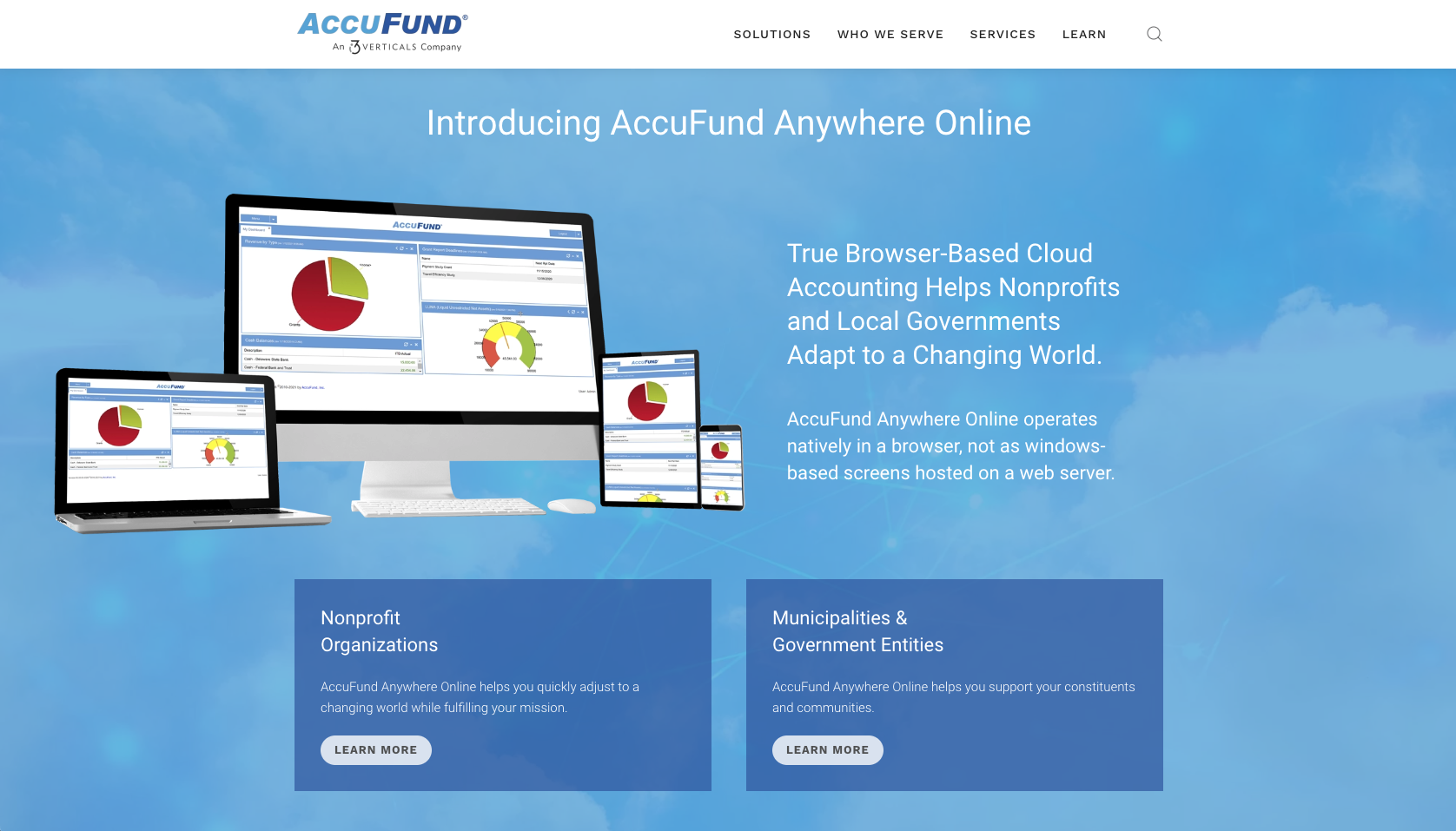
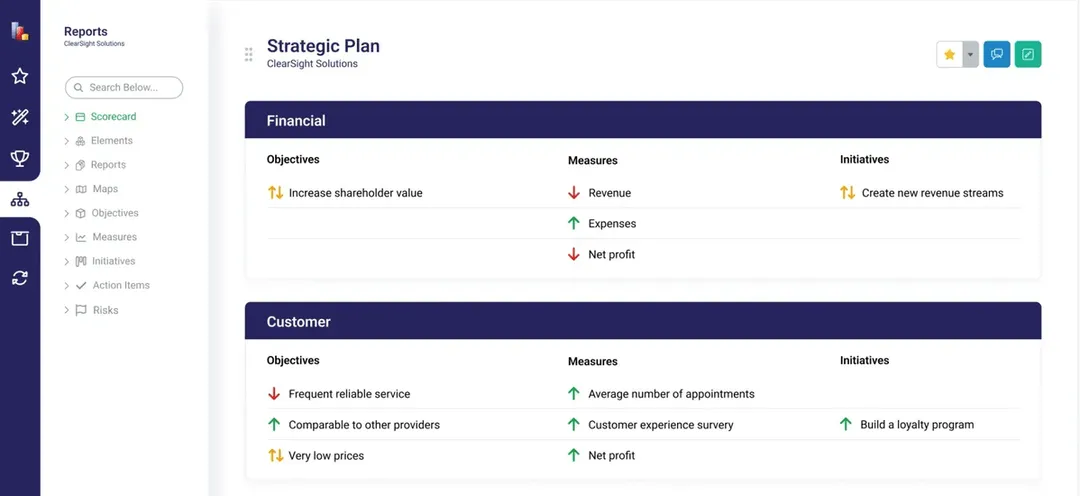
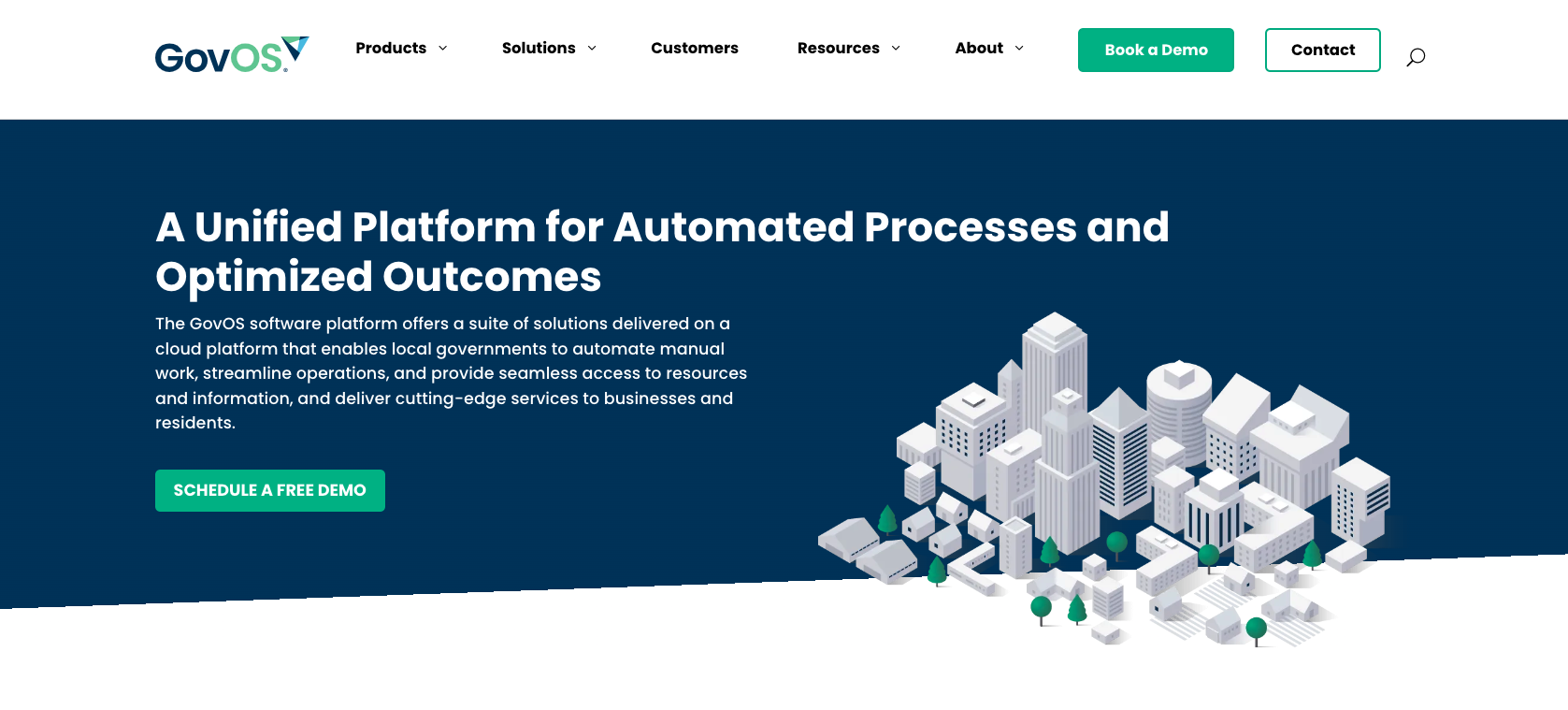


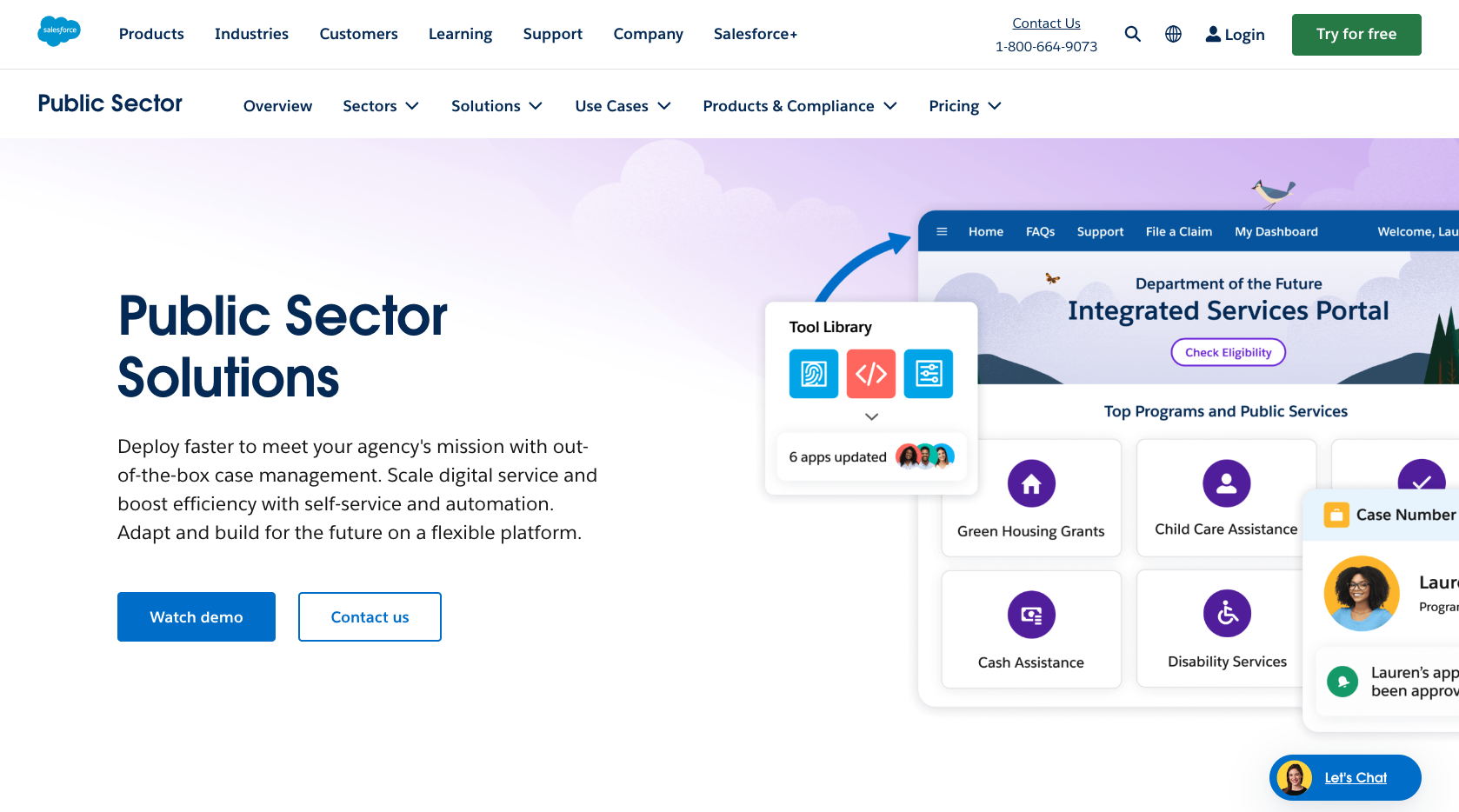
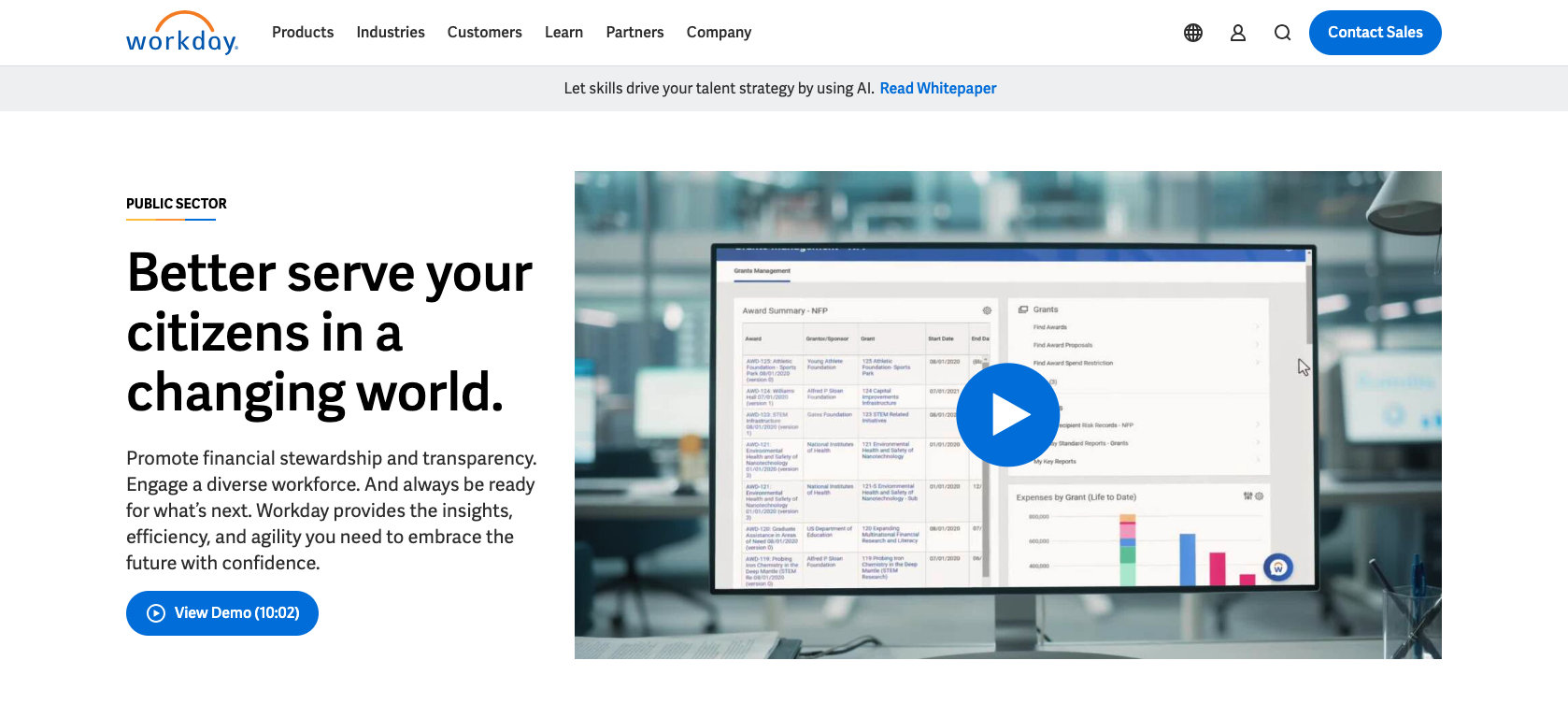































Send Comment: